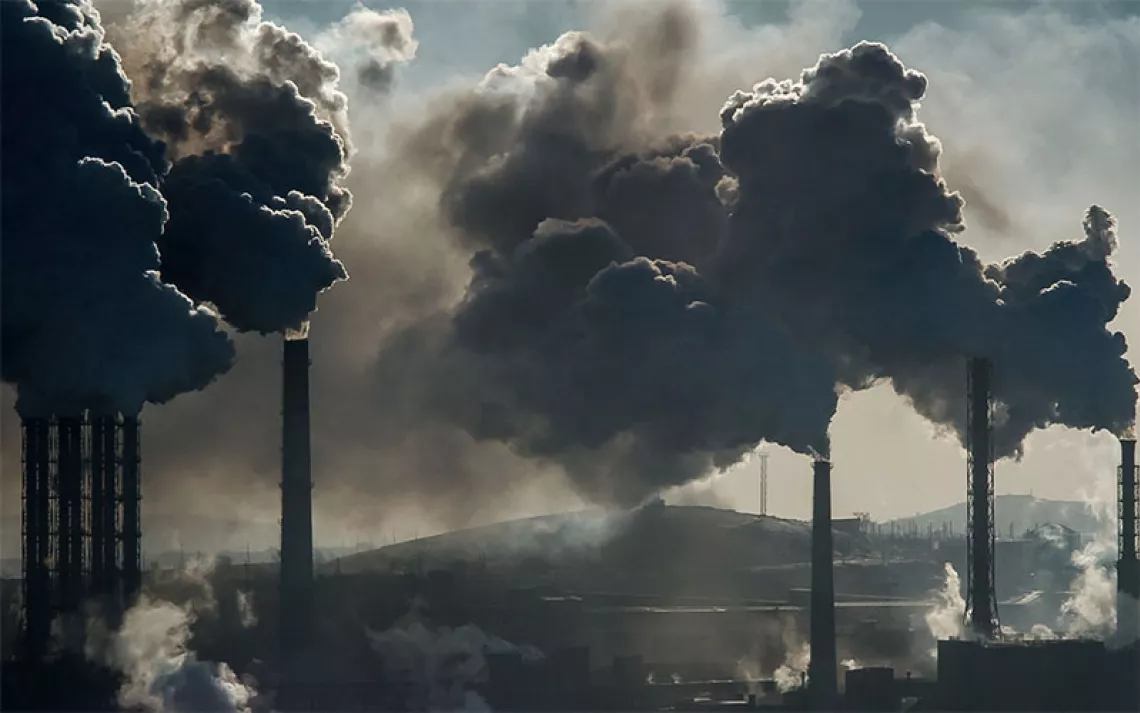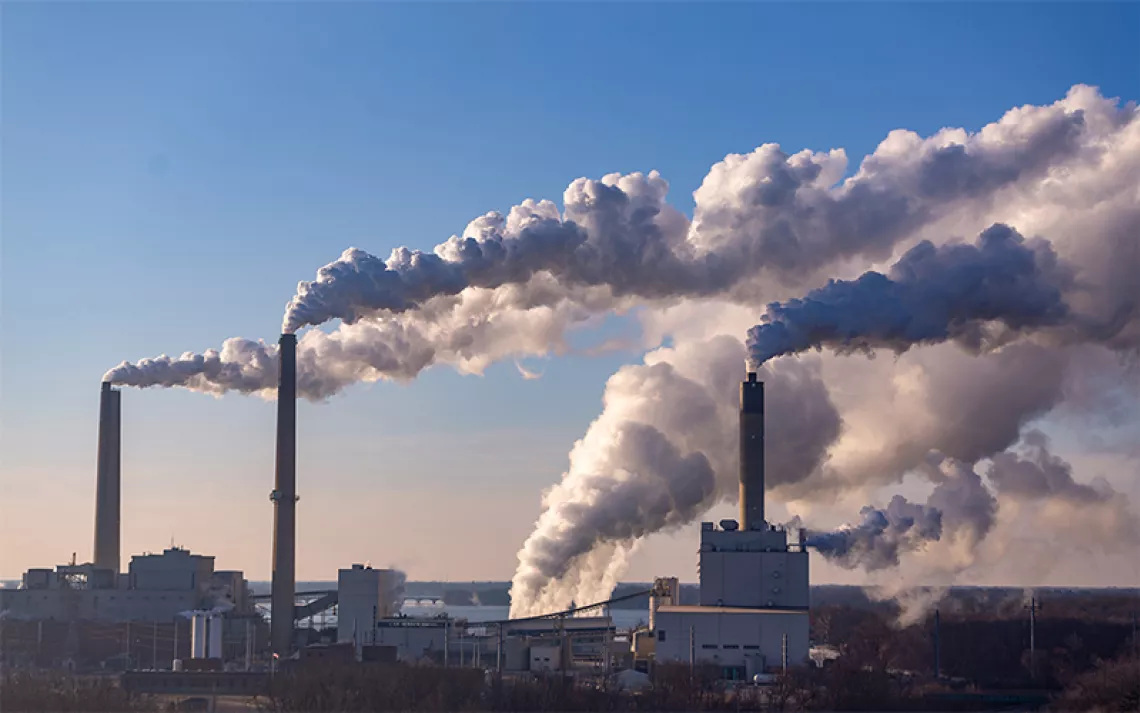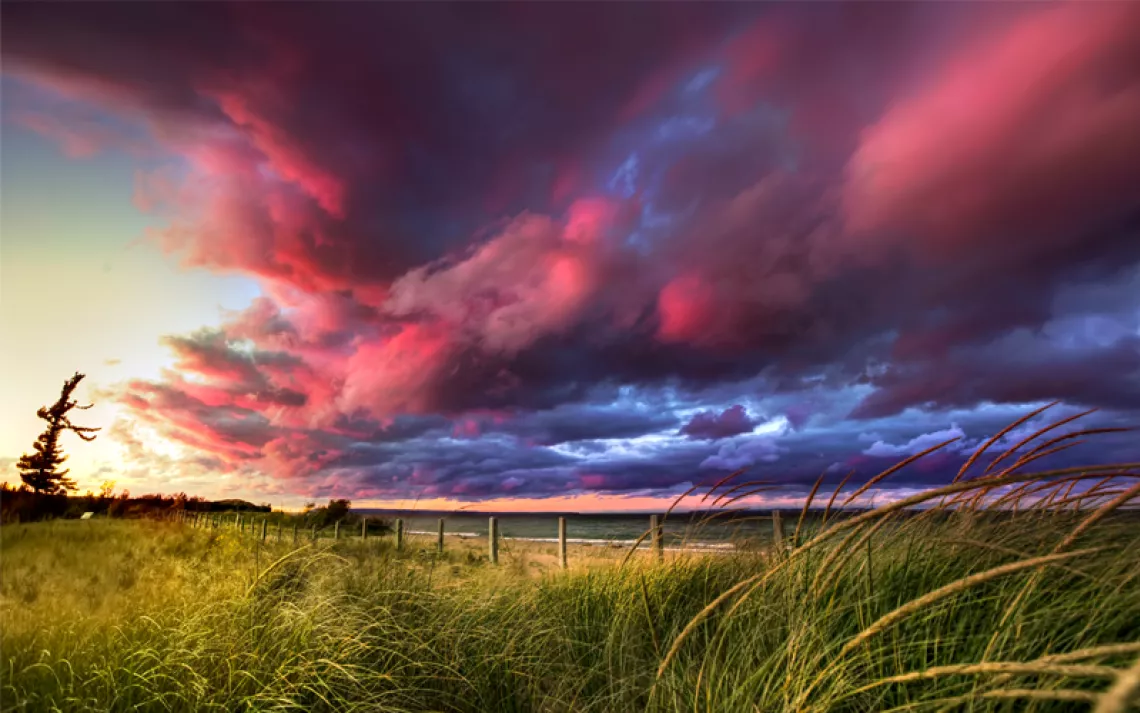In late June, when the snow disappears from the high-country forests, Jock Jacober moves hundreds of cows into the meadows of Coal Basin in Colorado's White River National Forest. Located between 9,000 and 10,000 feet, the mid-elevation pastures are part of the 221,500-acre Thompson Divide, undeveloped public lands that provide important summer livestock forage and essential elk-calving habitat.
From the growing mountain town of Carbondale, Jacober and his three sons operate Crystal River Meats, processing grass-fed beef that he and other local ranchers raise. Started in 1999, the specialty business has grown to distribute to Whole Foods and Natural Grocers supermarkets. Most of the ranchers rely on U.S. Forest Service grazing leases in Coal Basin and other designated roadless parcels in the Thompson Divide. "For 100 years, guys have been running cattle up there," Jacober says. "It's a good place to grow food for the valley."
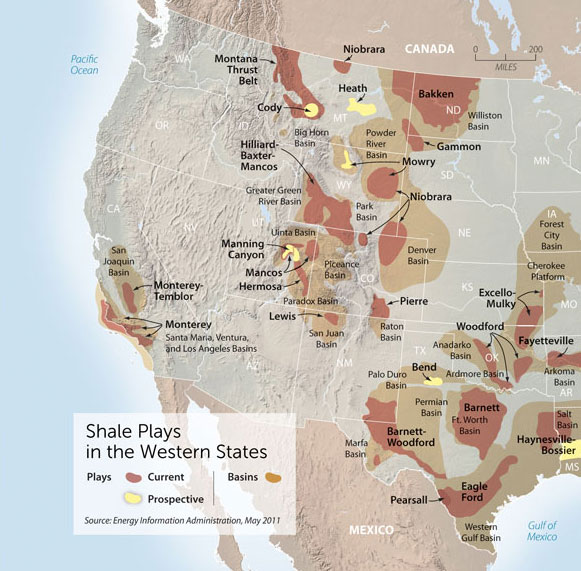
Jacober, the son of a petroleum geologist, says, "I've watched energy development all my life across the West." Carbondale and Aspen are former mining towns in the Roaring Fork River Valley that were transformed into destinations for skiing and other recreational sports in the 1980s. Down-valley, near the town of Rifle, the 73,000-acre Roan Plateau was a government oil shale reserve slated to solve the 1970s energy crisis until Exxon gave up and triggered a local recession. In the past decade, companies have employed hydraulic fracturing—the use of chemical-laden fluids to crack open and reach shale-rock and tight-sands formations—to drill tens of thousands of oil and gas wells on private and public lands in western Colorado, and the industry isn't done yet. This latest boom in the West's energy cycle threatens the region's landscape on a scale larger than any other.
While ranchers like Jacober hold grazing leases in the Thompson Divide, the U.S. Bureau of Land Management has leased the mineral rights to the ground underneath for oil and gas exploration. Since 2008, Jacober and other locals have been working to protect the expansive public landscape.
"Virtually all of the guys we run with think that if you get development started up there, we'll eventually be out of business," says Jacober, who sits on the board of directors of the Thompson Divide Coalition, a group of ranchers, local officials, farmers, river runners, hunters, and environmentalists. "There won't be range for cattle anymore. It'll be range for trucks hauling water and fracking fluid and for pipelines."
Throughout the West, the energy industry has been pushing plans to exploit roadless areas, forests, and rangelands, especially as government agencies have lagged in regulating industrial activities and protecting public lands. Land managers have the power to mitigate drilling damage or to ban it altogether, but they are under pressure to increase domestic energy production. In April, the BLM kept alive unused leases in the Thompson Divide that were set to expire.
"We're not unique," Jacober says. "Every now and again, these places are identified as way too important to trash with energy development. But it takes the public. There's no watchdog."
THE ENERGY INDUSTRY holds leases to oil and gas resources on 38.5 million acres of federal public lands (an area larger than the state of Georgia), based on an analysis by the Natural Resources Defense Council. That figure encompasses national forests and rangelands as well as split-estate lands, where federal agencies own minerals beneath private properties.
Energy development on public lands has taken a backseat to drilling on private lands in terms of both industry pressure and public attention. Fracking hot spots like the Marcellus Shale in Pennsylvania and neighboring states, the Eagle Ford Shale in Texas, and the Bakken formation in North Dakota mostly underlie private property. The NRDC reports that leases on private lands cover more than 100 million acres.
On private lands, companies with mineral rights are free to punch holes, build roads, and set up equipment regardless of a surface-rights owner's concerns. Drilling on public lands, however, requires scrutiny from citizens and government scientists through the National Environmental Policy Act, and protests and lawsuits can hold up drilling plans.
Nevertheless, public-lands oil and gas production has increased since President Barack Obama took office. Large shale formations, or "plays," across the West remain tantalizing prizes to be exploited. In 2011, energy analysts identified California's Monterey Shale formation as an epic reserve that may hold more than 15 billion barrels of recoverable oil, which would be almost two-thirds of the supply in the lower 48 states. The BLM is proposing new leases for the region, including within the Los Padres National Forest. Existing wells are already being fracked there.
Meanwhile, Jock Jacober worries about the Thompson Divide, where a majority of the leases are in limbo. For justification, all he needs to do is look north to the Powder River Basin.
COVERING MUCH OF SOUTHEASTERN MONTANA and eastern Wyoming, the Powder River Basin stretches across 400 miles of windblown high plains. Despite the rural landscape, the air quality and ozone levels here rival those in Los Angeles. Whether via coal mining, coal bed-methane gas drilling, or fracking for gas and oil, the Powder River Basin and other parts of Wyoming have long powered the rest of America.
But even in a region accustomed to energy booms and busts, fracking is more intense than conventional oil and gas development, says Jill Morrison, an organizer with the Powder River Basin Resource Council. Fracking operations use billions of gallons of groundwater, a scarce resource in the West, and involve thousands of drill pads, deeper wells, more truck trips and road dust, and expanded road networks that fragment wildlife habitat. Fracking fluids can threaten groundwater supplies, and surface spills are common.
Yet the economics of fracking are enticing. Towns and counties near major shale plays have boomed. Morrison compares the growth triggered by the fracking boom to a drug binge: fun while it lasts, but ultimately destructive. Natural gas prices have plummeted over the past year because of heavy production, creating a glut in supply and halting activity in many areas.
On the ground, Morrison tracks the aftermath in depleted water supplies and abandoned wells. She estimates that 20,000 or more wells have been left unplugged and their sites unreclaimed on BLM lands in Wyoming. She has to guess because the agency doesn't effectively monitor restoration operations. The BLM requires a company to post what she calls a "ridiculously abysmal" $150,000 reclamation bond to cover all of its nationwide activities, rather than linking the amount to well numbers or production.
BOB ABBEY IS AMONG the government's critics—and has called the BLM's past oil and gas leasing policies "broken" even while he was running the agency. Abbey initially retired as the BLM's Nevada state director in 2005, and later criticized the agency under President George W. Bush for pressuring managers to open as much land as possible to oil and gas drilling. Signaling a move toward balanced use of BLM land, President Obama appointed Abbey the agency's national director in 2009.
Before retiring again last summer, Abbey pushed to increase renewable energy development on public lands while also introducing reforms for oil and gas exploration. In 2010, the BLM and the Interior Department introduced master leasing plans, regional strategies for managing landscapes with federal mineral rights. By accounting for both local environmental concerns and industry drilling priorities, master leasing plans are intended to protect natural resources while also easing the bottleneck of protests.
Morrison and the Sierra Club question the master plans' potential, since they apply only to unleased areas and, so far, haven't replaced the agency's severely outdated management plans in most places. The Powder River Basin Resource Council supports a phased approach to drilling that would set a gradual pace of development, but the idea has yet to gain industry or government traction.
During Abbey's tenure, the Interior Department also began developing a rule to require companies to disclose the chemicals they use in their fracking fluids and to put in place other environmental safeguards to ensure that drilled holes, or wellbores, don't leak. A May 2012 draft rule elicited criticism from the industry, which claimed it would stifle public-lands production—a response Abbey calls "rhetoric," since many aspects of the draft rule follow companies' own best management practices. Environmentalists haven't been thrilled with the draft rule, either. A revised version, leaked this January, includes less stringent wellbore rules and requires that chemicals be disclosed only after fracking has occurred.
"The new fracking rules will make some things better," says Nathan Matthews, an attorney with the Sierra Club's Environmental Law Program, "but not enough."
That's because the new reforms fail to broadly address the natural gas boom and its effects on human health and climate change. Natural gas fracking emits methane, a greenhouse gas that is 25 times more potent than carbon dioxide in global warming impact. A recent study of Vernal, Utah, and the surrounding public lands of the Uinta Basin, by researchers from the National Oceanic and Atmospheric Administration and the University of Colorado Boulder, found that wells were leaking 9 percent of the methane they produced.
In the absence of significant reform, Abbey says, there's another important element that can sway public-lands-management and energy policies. "I hope the public understands the valuable role they play," he says.
BACK AT THE THOMPSON DIVIDE, Jock Jacober and others have been pushing the BLM to cancel the 61 undeveloped leases in the region. The Thompson Divide Coalition wants to buy out energy companies' leases, following a strategy used by an environmental and citizens' coalition in Wyoming that raised $8.75 million to buy out leases in the state's Hoback Basin. Even Colorado governor John Hickenlooper, who once drank fracking fluid to demonstrate its safety and his industry support, opposes drilling in the Thompson Divide.
"Oil companies are continuing to posture that they're going to drill," Jacober says. "Our deal is, this land is doing a great job of providing an economic base for the peop
le who live here."
There are reasons for tempered optimism that the industry won't continue to get its way. In the past year, BLM officials have halted proposed leases near Dinosaur National Monument in northwestern Colorado and in South Park, a wide-open basin surrounded by 14,000-foot peaks that serves as a major water supply for metro Denver. The BLM is also reassessing the Roan Plateau, the rumpled, high-cliffed curtain of rock once prized for oil shale, after the Sierra Club, Trout Unlimited, and others won a federal court ruling saying the agency's energy development plan failed to consider the environmental impacts.
Colorado's North Fork Valley, an idyllic region an hour's drive west of the Thompson Divide, once survived on coal mining. But in recent years, organic farming, fruit orchards and wineries, and tourism have become local economic drivers. After the BLM announced plans in late 2011 to lease 22,000 valley acres, a citizen groundswell began criticizing the agency's archaic, 20-year-old local management plan and the threats to tourism, agriculture, and water. "We put pressure on them at every point you can imagine," conservation campaign consultant Pete Kolbenschlag says, referring to the massive turnouts at public meetings and the citizen lobbying of congressional representatives in Washington, D.C.
Their efforts paid off this February when the BLM announced it would defer making a decision on the leases. North Fork Valley community groups have since developed their own management vision for the parcels, which they hope the agency will consider alongside other alternatives.
Pitched battles between communities, industry, and the federal government aren't efficient approaches to public-lands management, Kolbenschlag says. But citizens have few options as long as leasing and drilling proceed under outdated plans and policies that fail to consider how Western communities and public-lands use have shifted.
"Unless communities are invited to the tables," Kolbenschlag says, "we're going to see pushback at all levels."
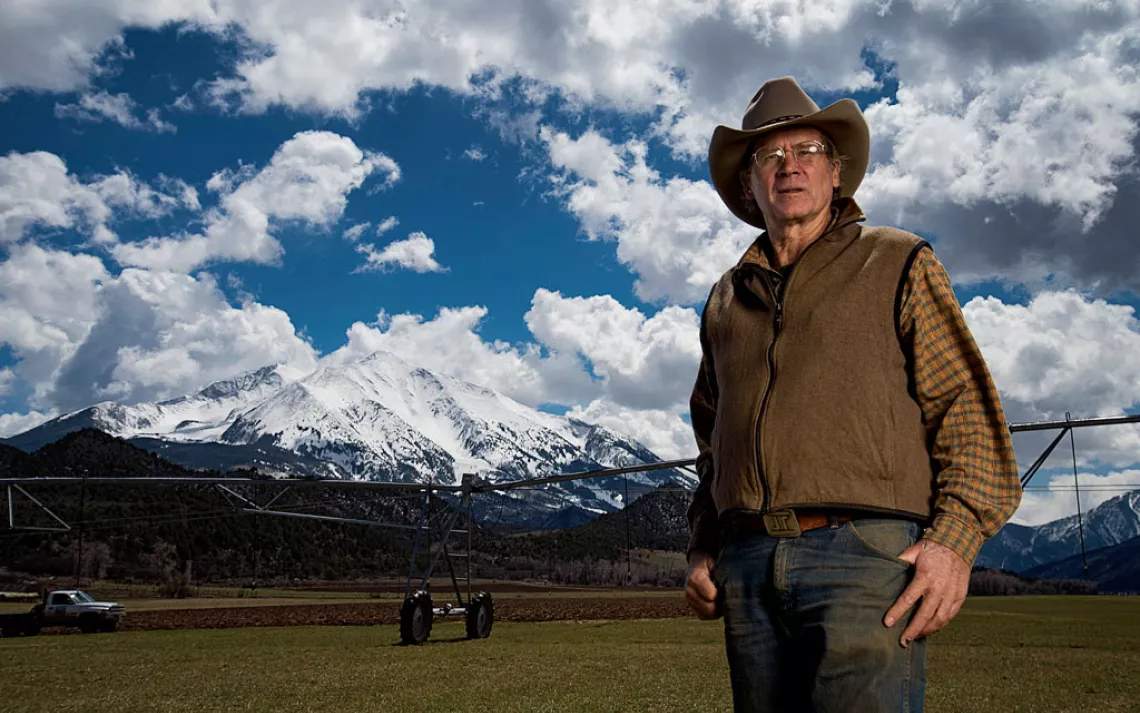

 The Magazine of The Sierra Club
The Magazine of The Sierra Club
